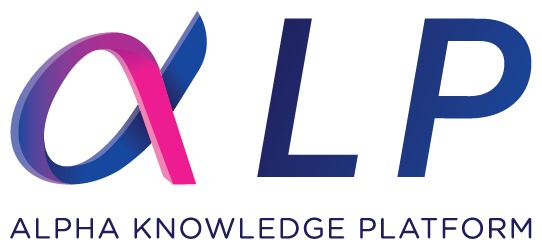TickerTape
Weekly Global Stablecoin & CBDC Update

This Week's Stories
Visa Direct has launched a pilot enabling corporate clients to prefund fiat-backed stablecoins for cross-border business payments. By integrating stablecoin wallets into its existing push-to-card and push-to-account rails, Visa aims to cut settlement times from days to minutes and reduce costs associated with correspondent banking. Early participants include two global payment service providers and three midsize banks, which will test euro- and dollar-pegged tokens. Visa’s API allows seamless conversion between fiat and stablecoin balances, with on-chain transparency and Visa’s fraud-monitoring overlay. The pilot seeks to validate both technical interoperability and regulatory compliance in jurisdictions across Europe and North America.
Key Takeaways:
- Corporate users can prefund stablecoin wallets via Visa Direct APIs.
- Settlement times targeted to drop from days to under 15 minutes.
- Pilot covers euro- and dollar-pegged tokens with fiat–crypto conversion.
- Visa’s fraud and compliance controls extend into on-chain transactions.
- Initial trials involve global PSPs and regional banks in EU/NA.
Why It Matters:
- Demonstrates mainstream payments network embracing stablecoins.
- May catalyse broader adoption of tokenised liquidity in trade finance.
- Offers banks a low-code path to digital-asset rails without full custody.
- Enhances transparency and auditability of cross-border flows.
- Signals regulatory comfort with hybrid fiat-stablecoin models.
A coalition of ten leading global banks including Bank of America, Deutsche Bank, Goldman Sachs, UBS, Citi, Barclays, TD Bank, Santander, BNP Paribas, and Mitsubishi UFJ is jointly assessing the feasibility of issuing a stablecoin pegged 1:1 to G7 currencies.This initiative aims to combine the advantages of blockchain-based settlement, such as near-instant finality and enhanced transparency, with robust regulatory and risk-management frameworks. The consortium’s initial focus is on evaluating market demand, interoperability with existing payment infrastructures, and compliance with anti-money-laundering (AML) and know-your-customer (KYC) standards. If pursued, such a bank-backed stablecoin could significantly expand digital-asset usage beyond crypto exchanges, facilitating cross-border trade and institutional liquidity management while preserving financial stability.
Key Takeaways:
- Ten major banks form a consortium to explore a G7-pegged stablecoin.
- Focus on public-blockchain issuance with 1:1 real-world currency backing.
- Aim to enhance competition and interoperability in digital-asset markets.
- Regulatory alignment and risk mitigation are central to the project.
- Preliminary phase; user adoption and technical integration still under review.
Why It Matters:
- Signals traditional finance’s commitment to blockchain and tokenized assets.
- Could lower cross-border settlement costs and speeds.
- May redefine liquidity management for institutional treasuries.
- Sets groundwork for standardized, regulated stablecoins.
- Influences central-bank policies on private digital currencies.
During a massive $19 billion liquidation event triggered by new China-tariff announcements, Ethena’s yield-bearing stablecoin, USDe, deviated from its 1:1 dollar peg, dropping to $0.65 on Binance, before swiftly recovering. Despite the flash-crash, Ethena Labs confirmed that USDe remained overcollateralized and that mint-and-redeem mechanisms functioned normally. The incident also caused Ethena’s governance token, ENA, to tumble up to 40% before stabilizing. Clear compensation policies for affected traders are under review. USDe’s underlying basis-trade strategy, offering a 5.5% yield via crypto collateral and futures, weathered this stress test without jeopardizing solvency.
Key Takeaways:
- USDe fell to $0.65 amid unprecedented $19B liquidations.
- Algorithmic basis-trade model restored peg quickly.
- Overcollateralization shielded holders from losses.
- Governance token ENA experienced a 40% flash drop.
- Binance to review affected accounts and compensation.
Why It Matters:
- Highlights systemic risks in yield-bearing stablecoins.
- Demonstrates resilience of overcollateralized, algorithmic models.
- Reinforces need for robust liquidity-management protocols.
- Sets benchmarks for compensation and transparency standards.
- Informs regulatory discourse on stablecoin stability requirements.
The U.S. Social Security Administration (SSA) has announced the discontinuation of paper-check disbursements, deploying its inaugural digital-payment systems for benefit recipients. Starting November 2025, millions of Social Security beneficiaries will transition to electronic fund transfers (EFTs) or direct-deposit alternatives, including prepaid debit cards and mobile-wallet provisions. The SSA cites faster delivery, reduced processing costs, and enhanced fraud protection as primary motivations. The rollout follows pilot programs in several states, which demonstrated a 75% reduction in lost or stolen payments and a 40% decrease in administrative overhead. Social Security’s shift aligns with federal goals to modernize payment infrastructures and promote financial inclusion among underserved populations.
Key Takeaways:
- Paper-check issuance ends; digital disbursements begin November 2025.
- Beneficiaries can choose EFT, prepaid debit, or mobile-wallet options.
- Pilot studies showed 75% fewer lost payments.
- Administrative costs dropped by 40% in pilot regions.
- Enhanced anti-fraud measures integrated into digital platforms.
Why It Matters:
- Marks major federal push toward end-to-end digital payments.
- Improves speed and reliability of social benefits delivery.
- Reduces government processing expenses significantly.
- Advances financial inclusion for underbanked beneficiaries.
- Lays groundwork for broader federal digital-payment services.
A European Central Bank simulation has found that a retail digital euro could prompt depositors to move as much as €700 billion from commercial banks into digital euro accounts during a bank run scenario. The ECB’s model assumes account holders view the digital euro as safer due to its sovereign backing, triggering a rapid flight-to-safety that would strain bank liquidity and potentially force some lenders into emergency funding or resolution. The ECB stressed the need for design features, such as holding limits and tiered remuneration, to mitigate sudden outflows. This analysis, provided to EU finance ministers, underscores the importance of carefully calibrating the digital euro’s operational framework.
Key Takeaways:
- ECB simulation indicates up to €700 billion could migrate to digital euro in a crisis.
- Sovereign backing makes digital euro more attractive than bank deposits.
- Banks facing large outflows may require emergency liquidity or resolution measures.
- Design options (holding caps, tiered interest) are critical to control runs.
- Findings presented to EU finance ministers to inform digital euro rollout.
Why It Matters:
- Highlights systemic risks of retail CBDC if not properly designed.
- Underlines urgency for safeguards to protect bank stability.
- Informs policymakers crafting legislation and technical specs.
- May influence the adoption timeline and feature set of the digital euro.
- Sets precedent for other central banks planning retail CBDCs.
The European Commission announced that the EU’s Markets in Crypto-Assets (MiCA) framework sufficiently addresses risks posed by stablecoins, despite calls from the ECB for stricter safeguards. In response to a letter from crypto associations, the Commission affirmed that MiCA’s provisions on reserve requirements, governance, and transparency create a balanced regulatory environment. The ECB had warned of potential runs under a multi-issuance stablecoin model, where tokens issued outside the EU could be redeemed domestically, straining EU-based reserves. Stablecoin issuers countered that robust reserve management prevents such scenarios. The Commission plans to issue clarifying guidance on multi-issuance soon but sees no need for major legislative changes.
Key Takeaways:
- MiCA deemed robust for stablecoin risk mitigation.
- ECB concerns focus on runs under multi-issuance models.
- Crypto associations requested clarity on multi-issuance in MiCA.
- Commission will publish guidance rather than amend MiCA.
- Emphasizes balance between innovation and financial stability.
Why It Matters:
- Provides regulatory certainty to stablecoin issuers in the EU.
- Reduces likelihood of sudden policy shifts that could hamper growth.
- Signals a pro-innovation stance while maintaining safety.
- Offers guidance on cross-border issuance, aiding market participants.
- Shapes global stablecoin regulatory norms through EU example.
Visa announced a stablecoin prefunding pilot for its Visa Direct platform at Sibos 2025, enabling businesses to prefund cross-border payments with stablecoins instead of traditional fiat currencies. The pilot addresses inefficiencies in cross-border payments that often take days to complete, forcing businesses to deposit funds well in advance. With stablecoin settlement occurring in minutes, businesses can deploy capital more efficiently while recipients continue receiving payments in their local currency. The program targets banks, remitters, and financial institutions, with limited availability expected by April 2026.
Key Takeaways:
- Stablecoin prefunding reduces cross-border payment settlement from days to minutes
- Recipients maintain ability to receive payments in local currency despite stablecoin prefunding
- Pilot targets financial institutions with limited availability planned for April 2026
- Initiative aims to unlock business liquidity and modernize treasury management
Why It Matters:
- Represents major payment network’s commitment to integrating blockchain technology into traditional infrastructure
- Could significantly reduce costs and improve speed for international business payments
- Positions Visa competitively against emerging blockchain-based payment alternatives
- Validates stablecoins as practical solution for institutional cross-border payment challenges
The global stablecoin market capitalization crossed $300 billion for the first time in history during the week of October 7-13, 2025, representing a 46.8% increase since the beginning of the year. This surge signals growing institutional adoption and capital influx into cryptocurrency markets, driven largely by financial institutions embracing stablecoin infrastructure. The milestone comes as JPMorgan predicts Bitcoin could reach $165,000 by year-end and Citigroup raises Ethereum price targets to $4,500, while institutional investors continue increasing crypto allocations.
Key Takeaways:
- Stablecoin market cap crosses historic $300 billion threshold with 46.8% year-to-date growth
- Growth driven primarily by institutional adoption and financial institution integration
- Milestone coincides with JPMorgan’s $165,000 Bitcoin and Citi’s $4,500 Ethereum price targets
- Market expansion reflects broader cryptocurrency ecosystem maturation and institutional acceptance
Why It Matters:
- Validates stablecoins as foundational infrastructure for global digital payment systems
- Demonstrates sustained growth despite regulatory challenges and market volatility
- Positions stablecoin market for projected growth toward $1-2 trillion by decade’s end
- Reflects institutional confidence in blockchain-based payment alternatives to traditional systems
Cryptocurrency markets rebounded on October 13, 2025, after suffering the largest liquidation event in recorded history, with over $19 billion in traders’ positions eliminated following President Trump’s announcement of new China tariffs. Bitcoin recovered 3% to near $115,000 while Ethereum surged 9% to approximately $4,130, bringing total crypto market capitalization back above $4 trillion. The Friday sell-off saw Bitcoin lose over $200 billion in market cap and drop nearly 10%, while Ethereum fell 14%. Even stablecoins were affected, with USDe depegging to 65 cents on Binance before quickly recovering, though the event was isolated to that exchange.
Key Takeaways:
- Historic $19 billion liquidation event triggered by Trump’s China tariff announcement on Friday
- Bitcoin and Ethereum recover strongly with 3% and 9% gains respectively following market chaos
- Total crypto market cap rebounds above $4 trillion after briefly falling below that threshold
- USDe stablecoin temporarily depegged to 65 cents on Binance but quickly recovered to dollar parity
Why It Matters:
- Demonstrates cryptocurrency market’s continued sensitivity to major geopolitical announcements
- Validates concerns about leverage in crypto markets and potential for rapid deleveraging events
- Highlights systemic risks in crypto ecosystem when major stablecoins experience temporary depegging
- Could influence regulatory approaches to crypto market stability and leverage controls
Cryptocurrency exchange Binance announced it paid $283 million in total compensation to users after market turbulence on Friday caused three crypto assets to depeg from their intended values. The affected assets included Ethena’s stablecoin USDe, Binance-issued Solana liquid staking token BNSOL, and Wrapped Beacon liquid staking token WBETH. The depegging events occurred during the massive market sell-off triggered by President Trump’s tariff announcement, demonstrating how extreme market stress can affect even supposedly stable digital assets. Binance’s prompt compensation demonstrates the exchange’s commitment to user protection during extraordinary market events.
Key Takeaways:
- Binance compensates users $283 million for depegging of USDe, BNSOL, and WBETH during market chaos
- Three different asset classes affected: stablecoin, liquid staking tokens from different blockchain networks
- Depegging events isolated to Binance platform rather than affecting broader market pricing
- Exchange demonstrates commitment to user protection through prompt compensation for platform-specific issues
Why It Matters:
- Highlights vulnerabilities in digital asset pegging mechanisms during extreme market stress
- Demonstrates importance of exchange-level protections and compensation policies for users
- Could influence regulatory approaches to exchange liability for asset depegging events
- Validates concerns about systemic risks in liquid staking and synthetic asset ecosystems
Digital asset investment products recorded unprecedented weekly net inflows of $3.17 billion for the week ending October 10, 2025, pushing year-to-date inflows to an all-time high of $48.7 billion according to CoinShares data. Bitcoin ETFs alone attracted $2.67 billion, bringing year-to-date Bitcoin inflows to $30.2 billion, while Ethereum products saw $338 million despite facing $172 million in Friday outflows. Trading volumes reached record levels with $53 billion in weekly volume, double the 2025 average, and $15.3 billion in daily volume on the tariff announcement day. However, total Assets Under Management dropped 7% to $242 billion following the market turmoil.
Key Takeaways:
- Record $3.17 billion weekly inflows push 2025 total to $48.7 billion, surpassing all previous years
- Bitcoin products dominate with $2.67 billion weekly inflows despite market volatility
- Trading volumes hit unprecedented levels with $53 billion weekly and $15.3 billion daily records
- Ethereum maintains strong institutional interest with $338 million weekly inflows
Why It Matters:
- Demonstrates continued institutional confidence in crypto despite significant market volatility
- Validates Bitcoin ETFs as preferred vehicle for institutional crypto exposure
- Highlights disconnect between short-term price action and long-term institutional adoption trends
- Could support crypto market recovery through sustained institutional capital allocation
Banco Santander announced plans to launch cryptocurrency trading services through its digital banking platform Openbank in Spain, marking another major European bank’s entry into retail crypto services. The initiative represents Santander’s strategic expansion into digital asset offerings following regulatory clarity in European markets. Openbank customers will gain access to cryptocurrency trading capabilities integrated with traditional banking services, providing seamless crypto-to-fiat conversion. This development positions Santander among leading European banks offering direct cryptocurrency access to retail customers through established banking channels.
Key Takeaways:
- Major Spanish bank Santander integrates crypto trading with traditional banking through Openbank platform
- Initiative follows regulatory clarity enabling European banks to offer direct crypto services
- Crypto trading integrated with existing banking services for seamless customer experience
- Positions Santander competitively among European banks expanding into digital asset services
Why It Matters:
- Demonstrates accelerating European bank adoption of cryptocurrency services for retail customers
- Could influence other traditional banks to integrate crypto trading with conventional banking platforms
- Validates regulatory environment supporting bank-offered crypto services in major European markets
- May accelerate mainstream crypto adoption through trusted banking institution partnerships
Spain’s embedded finance market is experiencing robust expansion with projected 11.2% growth in 2025, driven by fintech innovation, regulatory support, and increased digital adoption across B2B credit, insurance, and payment sectors. The market growth is fueled by strategic partnerships and a maturing competitive landscape embracing open banking and API technology. Platformization trends and seamless integration of banking and insurance services are reshaping Spain’s digital payment ecosystem. Major stakeholders including fintech companies and established banks are strengthening capabilities through partnerships and acquisitions, focusing on buy-now-pay-later services, microinsurance, and embedded lending solutions.
Key Takeaways:
- Spanish embedded finance market projects 11.2% growth in 2025 across multiple financial sectors
- Open banking and API technology adoption drives competitive landscape maturation
- Strategic partnerships between fintechs and traditional banks accelerate service integration
- BNPL, microinsurance, and embedded lending emerge as key growth areas
Why It Matters:
- Positions Spain as leading European market for embedded finance innovation
- Demonstrates successful integration of traditional banking with fintech solutions
- Could serve as model for other European markets developing embedded finance ecosystems
- Validates regulatory frameworks supporting fintech-banking collaboration and innovation
The Banque de France and Euroclear announced plans to develop a wholesale Central Bank Digital Currency integrated with TARGET services for tokenizing short-term French government debt. The pilot phase is expected to begin in late 2026, building on successful previous experiments in blockchain-based settlement systems. This initiative represents part of the broader European effort to modernize financial market infrastructure through distributed ledger technology while maintaining central bank money settlement. The project aims to demonstrate practical applications of wholesale CBDCs for government securities markets.
Key Takeaways:
- Banque de France and Euroclear collaborate on wholesale CBDC for French debt tokenization
- Pilot phase scheduled for late 2026 building on previous blockchain settlement experiments
- Integration with TARGET services ensures central bank money settlement for tokenized assets
- Project advances European strategy for blockchain-based financial market infrastructure
Why It Matters:
- Demonstrates practical progression from CBDC research to real-world government securities applications
- Could accelerate European adoption of blockchain technology in sovereign debt markets
- Positions France as leader in wholesale CBDC implementation for capital markets
- May influence other European countries to develop similar tokenized government debt initiatives
The International Monetary Fund warned on October 14, 2025, that the rapidly expanding $305 billion stablecoin market could pose significant threats to traditional lending, monetary policy effectiveness, and potentially trigger runs on some of the world’s safest assets. The IMF highlighted concerns about stablecoins’ increasing integration with mainstream finance despite being among the less volatile segments of cryptocurrency markets. The warning reflects growing regulatory attention to stablecoins as their market size approaches systemic significance and their backing assets become increasingly concentrated in government securities and bank deposits.
Key Takeaways:
- Stablecoin market reaches $305 billion with IMF warning of threats to traditional lending and monetary policy
- Risks include potential runs on safe assets and disruption to conventional financial intermediation
- Growing integration with mainstream finance increases systemic importance despite lower volatility than other crypto
- IMF joins succession of regulators and watchdogs expressing concerns about rapid sector growth
Why It Matters:
- Validates growing concerns among international financial institutions about stablecoin systemic risks
- Could influence global regulatory approaches to stablecoin oversight and capital requirements
- Highlights tension between stablecoin innovation and traditional banking system stability
- May accelerate development of international standards for stablecoin regulation and supervision
The Solana Foundation and South Korean cryptocurrency startup Wavebridge signed a Memorandum of Understanding on October 14, 2025, to develop KRW stablecoin infrastructure specifically for financial institutions. This partnership aims to help Korean banks and asset managers launch on-chain offerings including stablecoins and tokenized investment products. Meanwhile, BDACS continues advancing KRW1, potentially the first won-pegged stablecoin under the Digital Basic Act, which launched on Avalanche for its “technological superiority.” The developments highlight how early KRW stablecoins are bypassing Ethereum in favor of alternative blockchain platforms.
Key Takeaways:
- Solana Foundation partners with Wavebridge to build KRW stablecoin infrastructure for Korean financial institutions
- BDACS’s KRW1 leads development on Avalanche platform, positioned as first won-pegged stablecoin under new regulations
- Korean banks and asset managers exploring on-chain stablecoins and tokenized investment products
- First generation of Korean stablecoins favoring Avalanche and Solana over Ethereum for technical advantages
Why It Matters:
- Positions South Korea as major Asian market for regulated stablecoin innovation
- Demonstrates blockchain competition beyond Ethereum for institutional stablecoin deployment
- Could influence other Asian countries’ approaches to national currency stablecoin development
- Validates regulatory frameworks enabling bank participation in blockchain-based financial products
The United Kingdom lifted its ban on cryptocurrency Exchange Traded Notes (ETNs) for retail investors as part of the government’s broader digital asset innovation initiative. The policy reversal, combined with Bank of England Governor Andrew Bailey’s recent supportive stance on stablecoins, suggests UK regulators are responding to competitive pressures and seeking to position London as an attractive jurisdiction for digital asset innovation. The change reflects awareness that restrictive crypto policies could impact the UK’s competitiveness in attracting financial firms and investment amid the country’s broader economic growth priorities.
Key Takeaways:
- UK removes retail investor restrictions on crypto ETNs as part of digital asset innovation push
- Policy shift aligns with Governor Bailey’s recent supportive comments on stablecoin regulation
- Change reflects concern about maintaining UK competitiveness in global financial services
- Initiative aims to position London as attractive jurisdiction for digital asset business development
Why It Matters:
- Signals significant shift in UK regulatory approach from restrictive to innovation-friendly crypto policies
- Could attract international crypto businesses seeking regulatory-friendly jurisdictions
- Demonstrates competitive pressure among major financial centers to embrace digital asset innovation
- May influence retail crypto investment patterns and market development in Europe
Kenya’s parliament passed legislation on October 13, 2025, creating a comprehensive supervisory regime for cryptocurrency asset issuers, providing legal clarity for the rapidly growing digital asset sector in East Africa’s largest economy. The new law establishes regulatory oversight mechanisms for crypto service providers and creates a structured framework for digital asset operations. This development positions Kenya as a progressive jurisdiction in Africa for cryptocurrency regulation, following similar initiatives across the continent as governments seek to balance innovation with consumer protection and financial stability.
Key Takeaways:
- Kenyan parliament approves comprehensive crypto asset supervisory regime providing regulatory clarity
- New framework establishes oversight for crypto service providers and issuers
- Legislation addresses growing digital asset activity in East Africa’s largest economy
- Positions Kenya as regional leader in progressive cryptocurrency regulation
Why It Matters:
- Provides regulatory certainty for crypto businesses operating in major African market
- Could accelerate digital asset adoption through clear legal framework and consumer protections
- May influence other African countries to develop similar comprehensive crypto regulatory approaches
- Demonstrates African governments’ proactive stance on embracing digital financial innovation
StableX Technologies announced a strategic partnership with BitGo on October 14, 2025, to secure and scale its $100 million digital asset treasury strategy. The collaboration leverages BitGo’s institutional-grade custody and security infrastructure to support StableX’s expansion of digital asset holdings and treasury management operations. The partnership reflects growing corporate adoption of significant digital asset treasury positions, joining over 200 companies that collectively hold more than $100 billion in digital assets according to recent industry reports.
Key Takeaways:
- StableX partners with BitGo for institutional custody of $100 million digital asset treasury
- Collaboration focuses on security infrastructure and scaling capabilities for treasury operations
- Partnership reflects broader trend of corporate digital asset treasury adoption
- BitGo provides institutional-grade custody supporting major corporate crypto holdings
Why It Matters:
- Demonstrates continued growth in corporate digital asset treasury strategies beyond early adopters
- Validates institutional custody as critical infrastructure for large-scale corporate crypto holdings
- Could influence other companies to consider similar digital asset treasury partnerships
- Positions StableX among significant corporate holders of digital assets for treasury purposes
The Reserve Bank of India (RBI) has launched the offline digital rupee (e₹), allowing secure person-to-person and person-to-merchant transactions without persistent internet connectivity. Accessible via bank-issued digital wallets from 15 participating banks, including SBI, ICICI, HDFC, and Union Bank, the e₹ supports NFC-based tap payments and minimal network signal transfers, ensuring service in remote regions.Beyond basic transfers, programmable features restrict funds by purpose, expiry, location, or merchant category. Early deployments in Gujarat’s G-SAFAL and Andhra Pradesh’s DEEPAM 2.0 demonstrate targeted subsidy delivery. According to RBI Governor Sanjay Malhotra, the e₹ complements India’s Digital Public Infrastructure, bolstering financial inclusion and fintech innovation by offering a sovereign, scalable digital cash alternative.
Key Takeaways:
- Offline functionality via NFC or minimal signals broadens reach to rural and underserved areas.
- Digital wallets provided by 15 major banks ensure widespread usability.
- Programmable features enable conditional fund usage and targeted program delivery.
- Integration with state schemes like G-SAFAL and DEEPAM 2.0 showcases practical utility.
- e₹ strengthens India’s Digital Public Infrastructure and fintech ecosystem.
Why It Matters:
- Extends sovereign digital currency access beyond urban centers.
- Enhances financial inclusion by servicing connectivity-challenged populations.
- Introduces programmable money capabilities for more efficient government disbursements.
- Positions India among the first to operationalize offline-capable CBDC.
- Lays groundwork for broader fintech innovation using a central bank–backed digital asset.
Vietnam’s government is fast-tracking the adoption of digital payment solutions to stimulate economic activity and financial inclusion. A coordinated strategy involves upgrading payment infrastructure, incentivizing e-payment adoption, and integrating mobile wallet services across public and private sectors. Partnerships with fintech providers support QR-code standards, contactless payments, and interoperability between banks and non-bank PSPs. Regulatory adjustments simplify licensing for payment service providers and promote cross-border remittances. These measures aim to reduce cash dependency, lower transaction costs, and improve transparency in financial flows. Early outcomes show rising e-payment volumes in retail and utility sectors, with rural adoption gaining momentum as smartphone penetration increases.
Key Takeaways:
- National push to standardize QR-code and contactless payment systems.
- Regulatory reforms streamline PSP licensing and promote interoperability.
- Collaborations with domestic and international fintech firms accelerate rollout.
- Growing e-payment volumes in both urban and rural regions.
- Cross-border remittance channels expanded through partnerships.
Why It Matters:
- Reduces reliance on cash, boosting transaction efficiency and security.
- Supports small businesses and informal sectors transitioning to digital.
- Enhances transparency, reducing leakages in public and private payments.
- Strengthens resilience of Vietnam’s financial infrastructure.
- Positions Vietnam as a leading ASEAN digital payments hub.
NPCI International Payments (NIPL), the overseas arm of India’s NPCI, signed an MoU with NTT Data Japan to facilitate acceptance of India’s UPI (Unified Payments Interface) across Japanese merchants. This collaboration aims to streamline digital payment experiences for the growing influx of Indian tourists and business travelers in Japan. Under the agreement, Japanese merchants will be equipped to process UPI QR payments, leveraging NTT Data’s local network and NPCI’s UPI infrastructure. The initiative is expected to deepen bilateral digital payment integration and pave the way for reciprocal cross-border payment frameworks between India and Japan.
Key Takeaways:
- MoU signed between NIPL and NTT Data Japan for UPI acceptance.
- Targets merchant onboarding across retail, hospitality, and transport.
- Aims to enhance digital payment convenience for Indian visitors.
- Leverages Japan’s established payment ecosystem and NPCI’s UPI platform.
- Sets foundation for broader cross-border payment collaborations.
Why It Matters:
- Extends UPI’s global footprint to key tourist destination.
- Strengthens India-Japan financial integration and tourism commerce.
- Demonstrates UPI’s scalability and appeal beyond domestic borders.
- Encourages other countries to consider similar acceptance frameworks.
- Reinforces India’s leadership in digital public infrastructure innovation.
The UK’s Financial Conduct Authority (FCA) has launched a major consultation on progressing fund tokenisation. The consultation aims to accelerate the adoption of blockchain-based registers and direct fund dealing, leveraging distributed ledger technology (DLT) for efficiency, transparency, and operational cost reductions. The FCA’s roadmap includes clarifying regulatory expectations, supporting sandboxes for on-chain innovation, and exploring use-cases such as tokenised money market funds as collateral and stablecoins for settlements. Through this, the FCA seeks to enable growth, protect consumers, and keep UK asset management on the leading edge of digital finance.
Key Takeaways:
- The FCA is consulting on enabling tokenisation in UK authorised funds, with rules and guidance for DLT use.
- A new optional “Direct to Fund” (D2F) dealing model is proposed, streamlining dealings between funds and investors.
- Clear pathways for using public and private blockchains while maintaining regulatory compliance and consumer protection.
- Exploration of tokenised funds, money market funds as on-chain collateral, and the use of stablecoins.
- Early estimates project significant cost savings via increased efficiency and lower operational overheads.
- Consultation closes on 21 November 2025
Why It Matters:
- Supports the UK’s ambition to be a global leader in digital finance.
- Lowers market entry barriers and regulatory frictions for new and existing firms.
- Reduces operational costs for funds, with potential savings passed to investors.
- Enhances market transparency, efficiency, and real-time settlement opportunities.
- Proactively anticipates and addresses emerging risks in asset tokenisation, including AML/KYC, operational resilience, and consumer protection.
- Enables new product structures and investor experiences, better suited to younger and tech-savvy demographics.
Stablecoin issuer Paxos acknowledged on October 15, 2025, that it mistakenly minted $300 trillion worth of PayPal’s PYUSD stablecoin before burning the tokens minutes later. The transactions were visible on Etherscan, the blockchain explorer for Ethereum, demonstrating the transparency of blockchain operations. The erroneous amount dwarfs the entire $2.4 trillion in US dollars currently in circulation, the $180.6 billion market value of Tether’s USDT, and the approximately $3.8 trillion total crypto market capitalization. While fat-finger errors have occurred in cryptocurrency before, stablecoin issuers maintain greater control over transactions compared to cryptocurrencies like Bitcoin, enabling rapid correction of such mistakes.
Key Takeaways:
- $300 trillion erroneous minting amount exceeds all US dollars in circulation and entire cryptocurrency market combined
- Tokens burned within minutes demonstrating stablecoin issuers’ control over transactions
- Error visible on Etherscan blockchain explorer showcasing transparency of distributed ledger technology
- Incident demonstrates both vulnerabilities and corrective mechanisms in stablecoin infrastructure
Why It Matters:
- Highlights operational risks in stablecoin issuance even with experienced institutional operators
- Demonstrates importance of rapid detection and correction capabilities in blockchain systems
- Could influence regulatory requirements for stablecoin operational controls and monitoring
- Validates transparency benefits of blockchain technology enabling public verification of corrections
Bank of England Deputy Governor Sarah Breeden confirmed on October 15, 2025, that the central bank will only remove proposed caps on stablecoin holdings when confident they pose no threat to financial stability. The BoE has suggested limits ranging from £10,000-£20,000 for individuals with higher caps for businesses, distinguishing itself from other major nations without such restrictions. Breeden emphasized that caps are necessary due to potential impacts of significant and rapid bank deposit outflows into stablecoins, which could cause a “precipitous drop in credit for businesses and households.” A consultation on revised regulatory framework proposals will be released next month, with the BoE anticipating lifting restrictions “once we determine that the transition no longer jeopardizes the availability of financing to the real economy.”
Key Takeaways:
- BoE maintains proposed £10,000-£20,000 individual stablecoin holding caps despite crypto industry opposition
- Consultation on revised regulatory framework expected next month with opportunity for public feedback
- Caps may be lifted when BoE confident stablecoin transition won’t threaten real economy credit availability
- Largest corporations would likely be exempt from caps allowing higher holdings if necessary
Why It Matters:
- Demonstrates BoE’s more cautious approach to stablecoins compared to other major financial centers
- Could impact UK competitiveness in attracting stablecoin businesses and users
- Highlights tension between financial stability concerns and innovation-friendly crypto policies
- May influence other jurisdictions’ approaches to managing stablecoin systemic risks
U.S. Bancorp announced on October 15, 2025, the establishment of a new division focused on digital assets and money movement to accelerate development and grow revenue from emerging digital products and services. Jamie Walker, a 20-year veteran at U.S. Bancorp, will lead the newly formed unit. Chief Digital Officer Dominic Venturo noted that “customers are increasingly interested in understanding how digital assets can facilitate secure money transfers, deposit storage, and the utilization of tokenized assets.” The initiative reflects growing interest among traditional banks to capitalize on lucrative sectors including stablecoin creation, cryptocurrency custody, asset tokenization, and digital currency transfers.
Key Takeaways:
- New dedicated unit focuses on stablecoin issuance, crypto custody, asset tokenization, and digital money transfers
- Jamie Walker, 20-year U.S. Bancorp veteran, appointed to lead digital assets division
- Initiative responds to customer demand for digital asset capabilities and secure money transfer solutions
- Reflects broader trend of traditional banks establishing dedicated digital asset business units
Why It Matters:
- Demonstrates continued institutional banking adoption of digital asset services and infrastructure
- Validates growing customer demand for blockchain-based financial services from traditional banks
- Could accelerate mainstream adoption through trusted banking brand offering digital asset capabilities
- Positions U.S. Bancorp competitively among traditional banks expanding into digital asset sectors
UK politician Nigel Farage announced on October 14, 2025, that if his party wins the next election, they will immediately shut down the Bank of England’s digital pound project, describing CBDCs as “the ultimate authoritarian nightmare.” Farage, who publicly supported cryptocurrency portfolio holdings in 2020, emphasized personal sovereignty through crypto ownership while opposing centralized digital currencies. He committed to making digital pound project staff “very sorry, chaps – you’re out of work” by stopping the initiative overnight. The statement comes as the BoE conducts research through a digital pound ‘design phase,’ with Farage echoing President Trump’s characterization of digital dollars as a “dangerous threat to freedom.”
Key Takeaways:
- Farage commits to immediate termination of BoE digital pound project if party wins next election
- Characterizes CBDCs as “ultimate authoritarian nightmare” while supporting private cryptocurrency
- Statement reflects growing political opposition to government-issued digital currencies in Western democracies
- Position aligns with Trump administration’s ban on digital dollar development in the United States
Why It Matters:
- Demonstrates increasing politicization of CBDC development in major Western democracies
- Could influence UK voter sentiment and political debate around digital currency initiatives
- Highlights ideological divide between government-issued and private digital currencies
- May impact Bank of England’s ability to advance digital pound development amid political opposition
Speakers at the ISLA Americas conference in Miami on October 14, 2025, discussed the explosive growth of the stablecoin market, which has reached $300 billion market capitalization with 40% year-to-date growth. Industry experts projected the market could expand to $2-4 trillion by 2030, driven by regulatory clarity from the GENIUS Act forming legal definitions for stablecoins. The conference explored possibilities of using stablecoins to trade repo on blockchain and discussed the Clarity Act’s expected passage before year-end, which will provide guidance on capital treatment for crypto assets and potential exchange exemptions for public blockchain operations.
Key Takeaways:
- Stablecoin market reaches $300 billion with 40% year-to-date growth and $2-4 trillion 2030 projections
- GENIUS Act legal framework triggers significant capital inflows into stablecoin infrastructure
- Clarity Act expected to pass by year-end providing capital treatment guidance for crypto assets
- Industry exploring practical applications including repo trading on blockchain using stablecoins
Why It Matters:
- Validates institutional confidence in stablecoin market’s long-term growth trajectory
- Demonstrates regulatory clarity’s critical role in unlocking institutional capital for digital assets
- Could accelerate traditional finance integration with blockchain-based infrastructure
- Positions stablecoins as foundational technology for next-generation securities lending and repo markets
Contact Financial partnered with e& Money on October 14, 2025, to launch an AI-driven digital finance platform in Egypt, representing what Ahmed Yehia, CEO of e& FinTech and Digital Lifestyle, described as “an unprecedented step toward redefining the digital financing experience in Egypt and the Middle East.” The collaboration embeds consumer finance directly into digital applications, offering customers seamless experiences powered by latest AI technologies. Industry observers view the alliance as the beginning of a long-term collaboration that could unlock new opportunities and reshape the digital finance landscape across the Middle East region.
Key Takeaways:
- First-in-region embedded consumer finance integrated directly into digital applications with AI capabilities
- Partnership aligns with e& Money’s transformation vision for integrated digital economy and financial inclusion
- Initiative represents beginning of strategic collaboration reshaping Middle East digital finance landscape
- AI-powered platform offers seamless customer experience for digital financing services
Why It Matters:
- Positions Egypt as innovation hub for AI-driven digital finance in Middle East region
- Demonstrates practical applications of AI technology in enhancing financial inclusion
- Could serve as model for other emerging markets integrating fintech with consumer applications
- Validates embedded finance as key trend in digital economy development
The stablecoin market reached an all-time high of $314 billion on October 16, 2025, driven by growth in Tether’s USDT and Circle’s USDC, according to Canaccord Genuity analysis. With the GENIUS Act treating compliant stablecoins as equivalent to cash, regulatory clarity is fueling momentum toward stablecoins becoming the internet’s “money layer.” Major financial institutions including Citigroup and Visa announced plans to launch their own stablecoins, intensifying competition with Tether’s 70% market dominance. The market remains underpenetrated relative to the theoretical addressable market of U.S. M2 money supply, leaving significant expansion room through 2026 as new entrants and use cases emerge.
Key Takeaways:
- Stablecoin market cap reaches record $314 billion with GENIUS Act providing regulatory foundation
- Tether maintains nearly 70% market share at $179 billion with planned $15-20 billion fundraising
- Major banks including Citi and payment networks like Visa entering stablecoin market
- USDC circulation growing faster than analysts anticipated, reinforcing competitive landscape intensity
Why It Matters:
- Validates stablecoins’ evolution from crypto trading tools to foundational payment infrastructure
- Demonstrates how regulatory clarity directly translates to market growth and institutional adoption
- Creates competitive pressure on Tether’s dominance as traditional finance enters the market
- Positions stablecoins as critical infrastructure reinforcing broader crypto ecosystem development
The Hong Kong Monetary Authority announced on October 15, 2025, the second cohort of its Generative Artificial Intelligence Sandbox in collaboration with Hong Kong Cyberport, with Ant Digital Technologies joining as a technology partner. The initiative focuses on proactive A.I. governance featuring “A.I. vs. A.I.” techniques for automated quality assessment of A.I.-generated outputs. Ant Digital Technologies will partner with Fubon Bank to develop an A.I.-powered mobile banking assistant and deploy ZOLOZ A.I. solutions for identifying and mitigating identity fraud, including deepfake-related threats using GPU-accelerated infrastructure.
Key Takeaways:
- Second GenA.I. Sandbox cohort focuses on A.I. governance and deepfake fraud protection
- Ant Digital partners with Fubon Bank on A.I.-powered personalized mobile banking assistant
- ZOLOZ A.I. solutions deployed for identity fraud detection using GPU-accelerated infrastructure
- Initiative addresses rising deepfake threats through cutting-edge protective measures testing
Why It Matters:
- Positions Hong Kong as leader in regulated A.I. innovation for financial services
- Addresses growing cybersecurity threats from A.I.-powered fraud including deepfakes
- Demonstrates practical applications of A.I. for enhancing banking security and customer experience
- Could serve as model for other jurisdictions developing A.I. governance frameworks for finance
An overhaul of BlackRock’s money market fund aims to attract stablecoin issuers under the new GENIUS Act framework. The revamped BlackRock Treasury Liquidity Fund (BSTBL) extends trading hours to 5:00 PM ET and prioritizes liquidity by investing predominantly in ultra-short U.S. Treasuries. With $13.5 trillion in assets under management, BlackRock positions itself as a leading reserve manager for issuers seeking secure, yield-bearing reserves. The fund’s compliance with federal stablecoin reserve requirements marks a significant institutional endorsement of stablecoins’ role in global payments.
Key Takeaways:
- BlackRock revamps its money market fund to better serve stablecoin issuers.
- Fund trading hours extended to 2:30 PM–5:00 PM ET to match stablecoin redemption windows.
- Investments focused on ultra-short U.S. Treasuries for maximum liquidity.
- Compliance with the GENIUS Act’s reserve guidelines ensures regulatory alignment.
- BlackRock aims to expand beyond Circle, offering services to a broader issuer base.
Why It Matters:
- Highlights growing institutional infrastructure supporting stablecoins.
- Signals major asset managers’ confidence in stablecoins as a payment layer.
- Enhances liquidity and operational flexibility for stablecoin issuers.
- Reinforces the importance of regulatory clarity under the GENIUS Act.
- May accelerate stablecoin adoption by reducing reserve management barriers.
The Financial Stability Board (FSB) warns that most jurisdictions lack comprehensive stablecoin regulations, potentially jeopardizing financial stability as the sector nears $290 billion. The report assesses 29 member countries, noting only the U.S., EU, Hong Kong and the U.K. have made meaningful progress. El Salvador’s non-participation highlights jurisdictional gaps. FSB Chair Klaas Knot urges enhanced cross-border cooperation, stressing that digital assets transcend national borders and require harmonized rules to manage systemic risk.
Key Takeaways:
- Stablecoin regulation remains “insufficient” in the majority of G20 jurisdictions.
- Global stablecoin market has grown nearly 75% over the past year.
- Only four major jurisdictions have implemented robust frameworks.
- El Salvador’s absence underscores uneven regulatory engagement.
- FSB calls for coordinated cross-border policy to close critical gaps.
Why It Matters:
- Uncoordinated rules heighten risks of regulatory arbitrage and fragmentation.
- Rapid stablecoin growth could pose systemic threats without global safeguards.
- Harmonized standards are crucial for secure cross-border digital payments.
- Signals urgency for policymakers to finalize stablecoin rulebooks.
- Influences central banks and legislators to prioritize stablecoin oversight.
Amid a partial U.S. government shutdown, advocates for stablecoin legislation confront delays in advancing the Digital Asset Market Clarity Act of 2025. While the GENIUS Act established foundational rules for stablecoin reserves, stakeholders warn that further statutory detail is needed to unlock private-sector innovation. Lawmakers in both chambers express cautious optimism but caution that procedural hurdles and budget impasses could stall the next regulatory phase, potentially slowing stablecoin integration into mainstream finance.
Key Takeaways:
- Government shutdown impedes progress on stablecoin clarity legislation.
- The Digital Asset Market Clarity Act awaits committee markup in both chambers.
- GENIUS Act provides baseline standards but leaves key details undefined.
- Industry groups lobby for expedited rule-making to harness stablecoin benefits.
- Political gridlock may delay private-sector product launches.
Why It Matters:
- Legislative uncertainty continues to hinder stablecoin market maturation.
- Delays in clarifying permissible reserve investments risk stalling issuer plans.
- A clear legal framework is critical for banks and fintechs to integrate stablecoins.
- Regulatory lag may drive innovators offshore to friendlier jurisdictions.
- Lawmakers’ actions will shape the pace of digital currency adoption in the U.S.
The Federal Reserve announces plans to extend Fedwire Funds Service and National Settlement Service to include Sundays by 2028. This move responds to customer demand for around-the-clock settlement, aligning with the rise of instant payment rails and fintech innovation. The extended schedule aims to facilitate real-time liquidity management for banks and corporate treasurers, supporting growth in digital payments and cross-border transactions while enhancing the resilience of U.S. payment infrastructure.
Key Takeaways:
- Fedwire and National Settlement to operate seven days a week by 2028.
- Response to the surge in demand for real-time and instant payment capabilities.
- Sunday operations will improve liquidity management for financial institutions.
- Complements existing initiatives like FedNow for instant retail payments.
- Implementation timeline allows system upgrades and stakeholder coordination.
Why It Matters:
- Enhances U.S. payments infrastructure to meet global 24/7 settlement standards.
- Supports expansion of digital and cross-border payments requiring constant liquidity.
- Reduces weekend funding gaps for banks and corporate treasurers.
- Strengthens competitiveness of U.S. clearing systems against global peers.
- Signals the Fed’s commitment to modernizing core payment services.
The Orchid Blueprint by the Monetary Authority of Singapore (MAS) is a comprehensive roadmap for digital money infrastructure. Developed through Project Orchid, it addresses the safe adoption of regulated stablecoins, tokenised bank liabilities, and central bank digital currencies. The blueprint’s main pillars are the settlement ledger, tokenisation bridge, programmability protocol, and Orchid Name Service, all geared to boost transaction security, interoperability, and user experience. It stresses governance, risk management, and regulatory compliance, balancing innovation with strong safeguards. By promoting common standards and collaborative frameworks, Singapore aims to avoid payment system fragmentation and drive sustainable advancement in digital finance.
Key Takeaways:
- MAS proposes a unified digital money framework for Singapore, supporting stablecoins, tokenised bank liabilities, and CBDCs.
- Core infrastructure includes settlement ledgers, tokenisation bridges, programmability standards, and a Name Service for user-friendly transactions.
- Emphasis on interoperability, security, and regulatory compliance to prevent system fragmentation.
- User experience, protection, and commercial/operational models are integral for sustainable adoption.
- Future-focused architecture allows modular enhancements as technology evolves.
Why It Matters:
- Establishes a safe, regulated environment for next-generation digital payments.
- Promotes financial system interoperability, lowering costs and complexity for businesses and consumers.
- Sets global benchmarks for digital money frameworks and programmable finance.
- Facilitates collaboration between central banks and industry, accelerating innovation.
- Enables Singapore to maintain its leadership in fintech and digital asset infrastructure
The Monetary Authority of Singapore (MAS) launched BLOOM, short for Borderless, Liquid, Open, Online, Multi-currency. Building on Project Orchid’s foundational work, BLOOM seeks to bolster Singapore’s financial infrastructure by enabling settlement with tokenised commercial bank money and regulated stablecoins across G10 and Asian currencies. The project promotes industry collaboration, with major banks, fintechs, and institutional partners participating to address regulatory, technical, and commercial challenges. Key focus areas include distributed clearing of digital assets, standardised and automated compliance mechanisms, and innovative agentic payments using AI-driven solutions. BLOOM underscores Singapore’s commitment to financial innovation, seamless cross-border payments, and leadership in programmable finance.
Key Takeaways:
- BLOOM develops Singapore’s infrastructure for digital money, leveraging lessons from Project Orchid.
- Focuses on settlement using tokenised commercial bank money and compliant stablecoins.
- Supports multi-currency and cross-border corporate payments and settlements.
- Prioritises automated, programmable controls for compliance and agentic payments.
- Engages leading banks, fintechs, and global stakeholders for broad adoption.
Why It Matters:
- Strengthens Singapore’s role as a global digital finance centre.
- Enables faster, programmable, and more secure transactions in multiple currencies.
- Reduces manual compliance costs and operational complexity.
- Fosters industry collaboration to drive commercial solutions and innovation.
- Sets a model for regulatory-compliant digital asset settlement frameworks globally.
Stablecoins, once seen mainly as digital cash for traders, are rapidly emerging as the backbone of a new global lending ecosystem. According to Visa, the past five years have seen over $670 billion in stablecoin-denominated onchain loans, with smart contract protocols auto-managing the loan lifecycle for borrowers worldwide. This shift enables borderless, 24/7 credit with enhanced transparency and efficiency. Lending activity, led by platforms like Aave, Compound, and Morpho, has rebounded from past market downturns, now reaching new highs in volume and active loans. Real-world asset tokenization and growing institutional participation are unlocking vast collateral pools, while the evolution of onchain credit scoring and undercollateralized loans may fast-track financial inclusion. For banks and institutions, integrating onchain infrastructure offers not just new yield opportunities but also a pathway to modernize core business operations in credit and capital markets.
Key Takeaways:
- $670B in stablecoin onchain loans since 2020; $51.7B borrowed in August 2025 alone.
- Lending protocols automate risk and remove traditional intermediaries.
- USDC and USDT dominate volumes; Ethereum and Polygon lead by blockchain usage.
- Institutional interest grows: tokenized Treasuries and real-world assets now collateralize loans.
- Competitive rates: recent averages 6.7% APR to borrow, 5% APY to lend.
- Innovations in credit scoring and undercollateralized lending are emerging.
Why It Matters:
- Stablecoins and programmable money broaden access to credit and transform financial services infrastructure.
- Institutional adoption bridges $40T+ in traditional assets with onchain liquidity and efficiency.
- Open, transparent lending markets reduce counterparty risks and lower costs.
- Regulatory clarity (e.g., GENIUS Act) encourages compliant, wider participation.
- Advances in identity and credit systems could democratize lending at global scale.
Powered by






